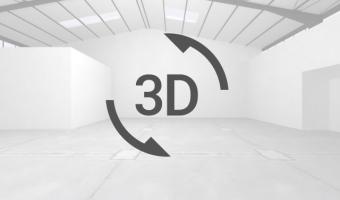Dazibao Exhibition
Fifty years ago, China entered one of the darkest phases of its modern history, the Great Proletarian Cultural Revolution, a period of terrible violence that scarred a generation of Chinese people. During the Cultural Revolution “big character posters” (dazibao 大字报) were large, hand-written signs pasted on walls throughout China. Their content criticized local officials, colleagues, teachers, bosses, co-workers, former friends—virtually no one was exempt—for a wide-range of supposed political transgressions in what often became a cycle of high-stakes political attacks and counter-attacks.
Despite the important role dazibao played in the visual and political landscape of the Cultural Revolution – as well as the subsequent Democracy Wall movement – they were never intended to be permanent, and so the vast majority were destroyed or simply decayed. Many China scholars, even experts on the period, have never had the chance to view dazibao up close.
The creation of huge numbers of dazibao at this particular moment in China’s history can also be understood as an aesthetic or artistic phenomenon. Though only a scintilla of these works survive, dazibao occupy an important position in Chinese art history. Their reflection of the previous artistic tradition and their continuing inspiration for contemporary artists makes them perhaps as valuable to the art historian as to the student of politics.
The mission of the Fairbank Center for Chinese Studies at Harvard University is to advance scholarship in all fields of Chinese studies. We are ecumenical in our choice of subjects and approaches. Our faculty celebrate the impressive cultural accomplishments of China in past and present, explore the many challenges that China is facing today, and recognize China’s many successes. But we also do not shy away from less pleasant or more controversial topics. The 50th anniversary of the Cultural Revolution is an opportune moment to reflect on the history of the Cultural Revolution and think about the relationship between past, present and future. For a variety of reasons, however, the anniversary went almost completely unmentioned in China.
This exhibition presents the first-ever exhibition of big character posters and woodblock prints from the Cultural Revolution in the United States, and the first time that these dazibao have been exhibited anywhere in the world.
Whether one sees these big-character posters and woodblock prints primarily in aesthetic terms, or treats them as historic relics or as objects that provoke conversations about China’s complex relationship with the past, we think they are worthy subjects of research and analysis. The Fairbank Center for Chinese Studies is proud to serve as the host of this exhibition.
Despite the important role dazibao played in the visual and political landscape of the Cultural Revolution – as well as the subsequent Democracy Wall movement – they were never intended to be permanent, and so the vast majority were destroyed or simply decayed. Many China scholars, even experts on the period, have never had the chance to view dazibao up close.
The creation of huge numbers of dazibao at this particular moment in China’s history can also be understood as an aesthetic or artistic phenomenon. Though only a scintilla of these works survive, dazibao occupy an important position in Chinese art history. Their reflection of the previous artistic tradition and their continuing inspiration for contemporary artists makes them perhaps as valuable to the art historian as to the student of politics.
The mission of the Fairbank Center for Chinese Studies at Harvard University is to advance scholarship in all fields of Chinese studies. We are ecumenical in our choice of subjects and approaches. Our faculty celebrate the impressive cultural accomplishments of China in past and present, explore the many challenges that China is facing today, and recognize China’s many successes. But we also do not shy away from less pleasant or more controversial topics. The 50th anniversary of the Cultural Revolution is an opportune moment to reflect on the history of the Cultural Revolution and think about the relationship between past, present and future. For a variety of reasons, however, the anniversary went almost completely unmentioned in China.
This exhibition presents the first-ever exhibition of big character posters and woodblock prints from the Cultural Revolution in the United States, and the first time that these dazibao have been exhibited anywhere in the world.
Whether one sees these big-character posters and woodblock prints primarily in aesthetic terms, or treats them as historic relics or as objects that provoke conversations about China’s complex relationship with the past, we think they are worthy subjects of research and analysis. The Fairbank Center for Chinese Studies is proud to serve as the host of this exhibition.
